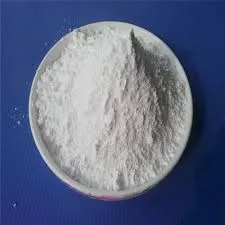Understanding Municipal Water Treatment Chemicals
Water is essential for life, and municipal water treatment plays a critical role in ensuring that the water we consume is safe and clean. To achieve this, various chemicals are used in the treatment process. These chemicals help to purify water by removing impurities, pathogens, and harmful contaminants. In this article, we will explore the different categories of municipal water treatment chemicals, their functions, and their importance in maintaining public health and safety.
Coagulants and Flocculants
One of the primary categories of chemicals used in water treatment is coagulants and flocculants. These substances help to remove suspended solids present in the water. Coagulants, such as alum (aluminum sulfate), are added to water to destabilize and aggregate particles. Once coagulants are introduced, it leads to the formation of larger particles or flocs that can be easily removed during the sedimentation process. Flocculants, on the other hand, enhance the settling of these flocs, making the overall process more efficient. The effective use of these chemicals is key to reducing turbidity and ensuring that the water is clear and visually appealing.
Disinfectants
Another critical group of chemicals is disinfectants, which are essential for eliminating harmful microorganisms that can lead to waterborne diseases. Chlorine, chloramines, and ozone are commonly used disinfectants in municipal water treatment facilities. Chlorination is the most widespread method, as chlorine is effective at killing bacteria and viruses. However, it can also produce disinfection byproducts that may pose health risks. Therefore, regulatory bodies closely monitor chlorine levels to ensure they remain within safe limits. Ozone, while a more potent disinfectant, must be handled carefully due to its potential risks if not monitored properly.
municipal water treatment chemicals

pH Adjusters
Maintaining the proper pH level in treated water is critical for both safety and system efficiency. pH adjusters, such as lime (calcium hydroxide) and sodium carbonate, are used to balance the acidity or alkalinity of the water. A neutral pH is essential not only for taste but also to prevent corrosion in pipes and plumbing fixtures, which can lead to the leaching of heavy metals into the water supply. By ensuring that the pH level is optimal, municipal water treatment facilities can protect both public health and infrastructure.
Corrosion Inhibitors
To prolong the lifespan of aging infrastructure, corrosion inhibitors are added to the treated water. These chemicals, like phosphates and silicates, help form a protective coating on the inside of pipes, reducing the risk of corrosion that can lead to contamination of the water supply. This is particularly important in cities with old pipeline systems where lead and other metals could leach into the water.
Conclusion
In summary, the use of chemicals in municipal water treatment is vital for ensuring that our drinking water is safe and clean. Coagulants, disinfectants, pH adjusters, and corrosion inhibitors all play essential roles in different stages of the treatment process. By carefully managing and evaluating these chemicals, municipal water systems can effectively provide potable water that meets regulatory standards and protects public health. Ongoing advancements in water treatment technologies and chemical applications will continue to enhance our ability to manage and safeguard this precious resource for generations to come.

